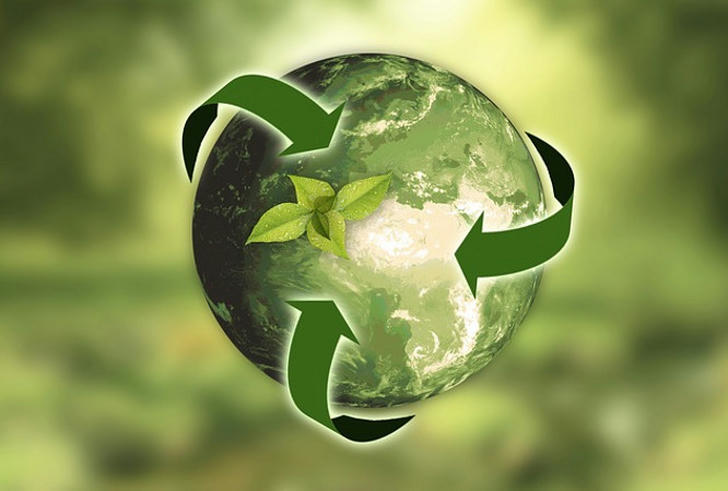U.S. Clean Energy Investment Recommendations for 2024
The U.S. clean energy industry has become the focus of investors in recent years as the global energy transition and the need to combat climate change continue to increase. The following are recommendations for investing in clean energy in the United States, supported by relevant data.

Prospects for Clean Energy Market Growth
According to the US Energy Information Administration (EIA), by 2024, clean energy will account for a rapidly growing share of the US power structure. In 2023, wind and solar energy accounted for more than 60% of renewable energy generation in the United States, and this proportion is expected to increase to more than 80% by 2030. This shows that the US clean energy market is expected to maintain strong growth momentum in the next 10 years.
Growth of Wind and Solar Energy
Wind Energy: The United States is the second largest wind energy market in the world, with an installed capacity of more than 140 GW, and it will continue to expand in 2023. Regions such as Texas, Iowa, and Oklahoma have advantages in wind power investment. By the end of 2024, the US wind power industry is expected to grow at a CAGR of 7%-9%.
Solar energy: Photovoltaic solar energy has grown at a significant rate over the past 10 years. According to SEIA (Solar Energy Industries Association), the installed capacity of solar energy in the United States will reach 153 GW in 2023, an increase of about 46% from 2020. Solar energy is expected to grow at an average annual rate of 20% over the next 5 years and is expected to continue to expand across the country.
Policy-driven opportunities
The US government has provided a lot of policy support to promote investment in clean energy. The Inflation Reduction Act (IRA) was signed in 2022 and has a significant impact on the clean energy industry. The bill promises to invest nearly $370 billion in renewable energy infrastructure and technology over the next decade. These funds are not only used directly for renewable energy projects, but also support the research and development of clean energy technologies, increasing the long-term development potential of the industry.
In addition, the IRA Act also provides continued support for tax incentives for clean energy, including the Investment Tax Credit (ITC) and the Production Tax Credit (PTC), which will significantly improve the profitability and return on capital of projects.
Investment target recommendations
In the clean energy sector, there are a variety of investment options, including direct investment in renewable energy projects, purchasing shares of listed companies, or investing in related industries through ETFs and funds.
A. Leading company investment
NextEra Energy (NEE): NextEra is one of the world's largest clean energy companies, with major businesses including wind and solar energy. Its revenue reached approximately US$22 billion in 2023, and is expected to maintain an average annual growth of 10% in the next few years.
First Solar (FSLR): First Solar is the largest solar panel manufacturer in the United States, benefiting from the local manufacturing incentive policy of the IRA Act. Its market share in North America continues to increase, and its stock price rose by more than 40% in 2023. It is expected to continue to benefit from policy-driven market expansion in the next few years.
Brookfield Renewable Partners (BEP): Brookfield Renewable focuses on the development and operation of renewable energy assets such as wind, hydropower and solar. The company manages a wide range of renewable energy assets, with an expected annual return of 7%-9% in 2024.
B. ETF and Fund Investment
Investors can also choose to diversify their investments through clean energy-related ETFs. Here are some ETFs worth noting:
iShares Global Clean Energy ETF (ICLN): ICLN focuses on clean energy companies worldwide, with holdings covering companies in the wind, solar and electric vehicle sectors.
Invesco Solar ETF (TAN): TAN mainly invests in solar-related companies and tracks the performance of the solar industry.
Risks and Challenges
Although the clean energy sector is full of opportunities, investors also need to consider some potential risks:
Policy dependence risk: Although the US government strongly supports clean energy, policy uncertainty may still have an impact on investment. For example, future changes in tax incentives or subsidy policies may have a negative impact on market sentiment and investment returns.
Technology and cost risks: Despite the continuous advancement of clean energy technology, there is still uncertainty about the cost and performance of large-scale energy storage technologies (such as battery energy storage systems). Breakthroughs in these technologies will determine the long-term viability and competitiveness of wind and solar energy.
Intensified market competition: As more and more companies enter the clean energy market, competition will become more intense, especially in the field of solar and wind equipment manufacturing. Investors need to pay close attention to industry dynamics and changes in the market share of enterprises.
Conclusion
The investment prospects of clean energy in the United States are broad. Benefiting from strong support from government policies and technological progress, there is huge growth potential in areas such as wind and solar energy. For long-term investors, choosing companies with policy support and technological advantages and diversified ETFs will hopefully bring stable returns. However, investors should also be wary of potential risks in terms of policy changes and technological costs. Before investing, it is recommended to conduct in-depth research on specific targets and reasonably diversify the investment portfolio to obtain long-term investment returns.
